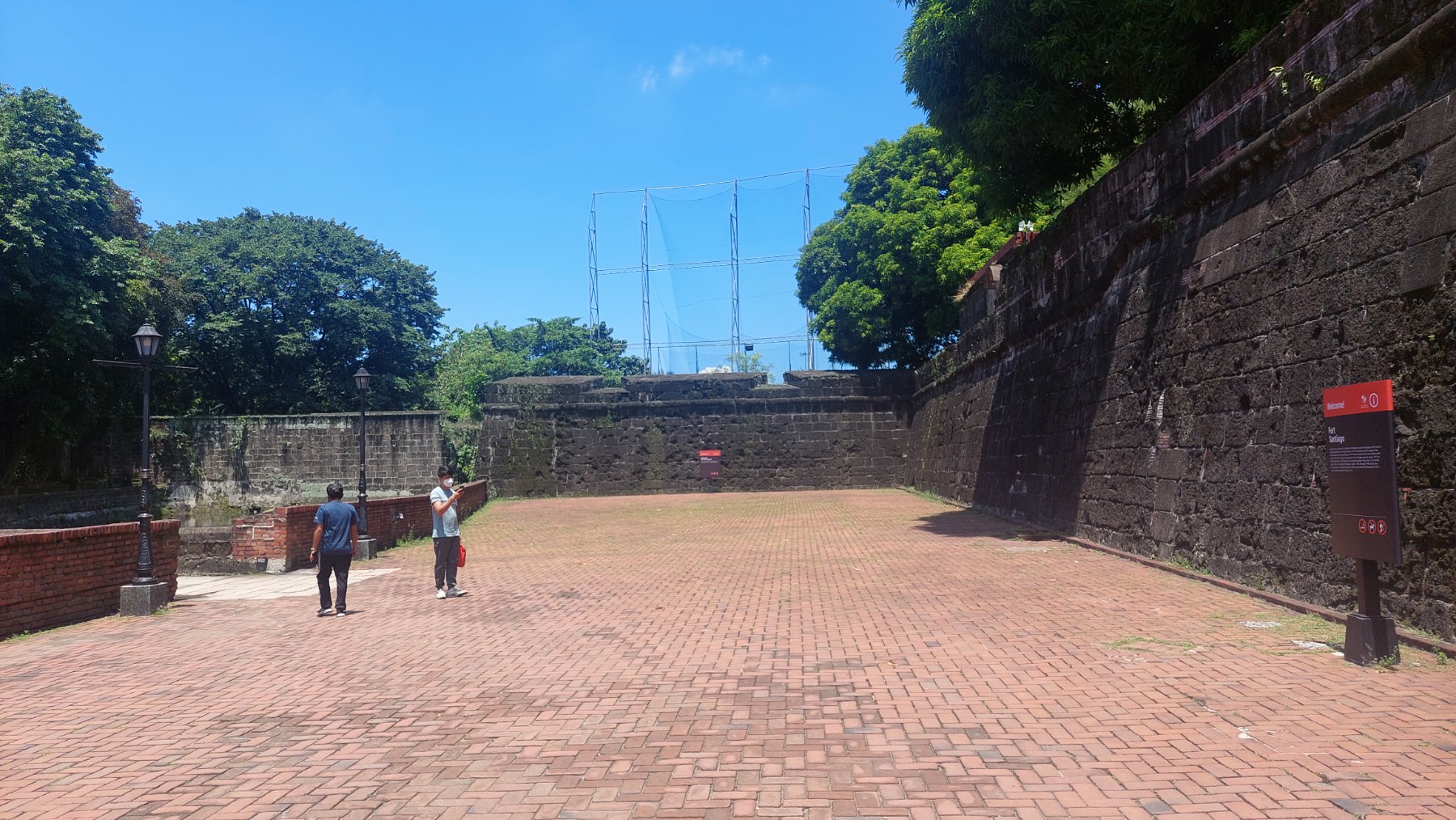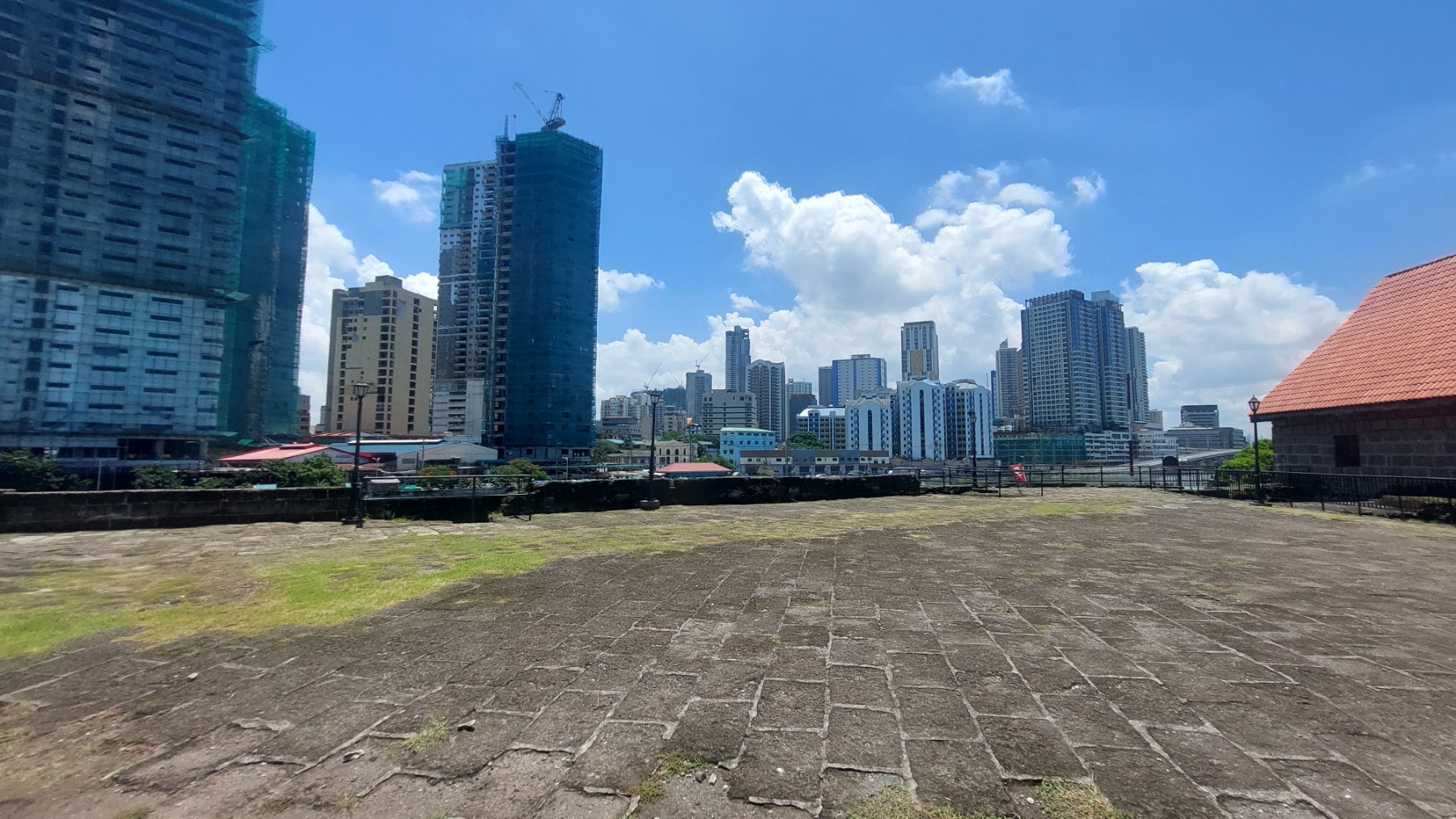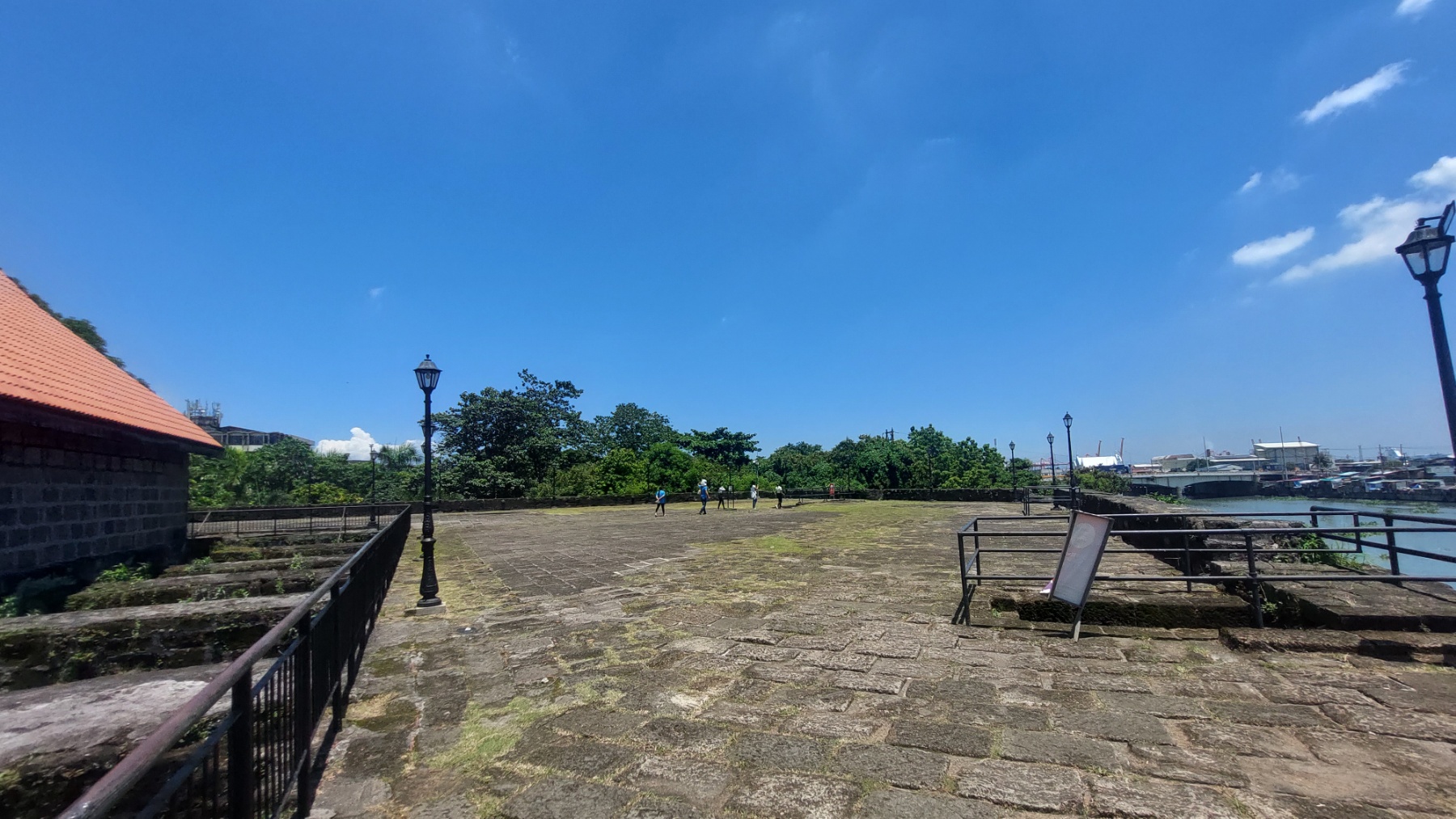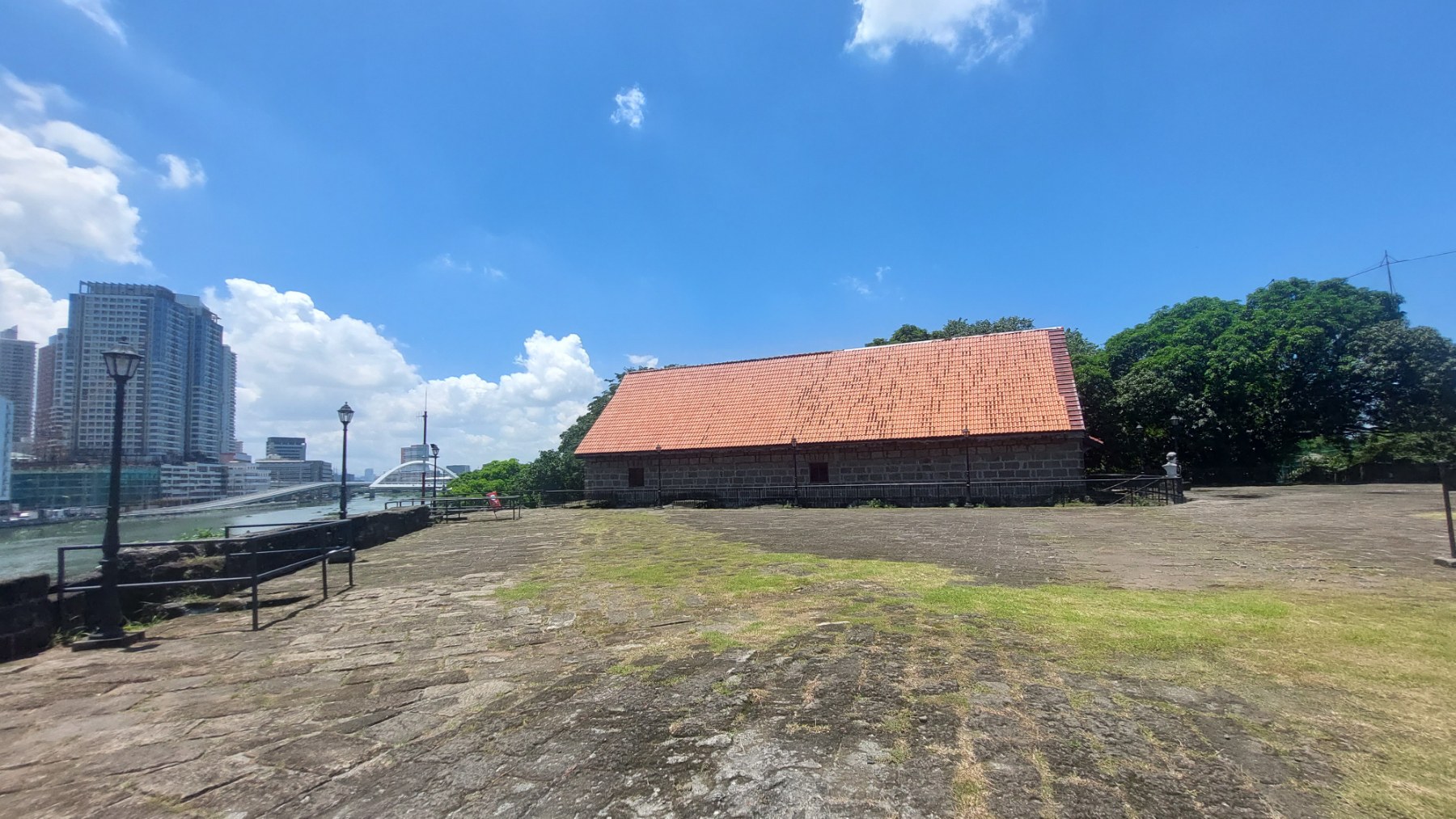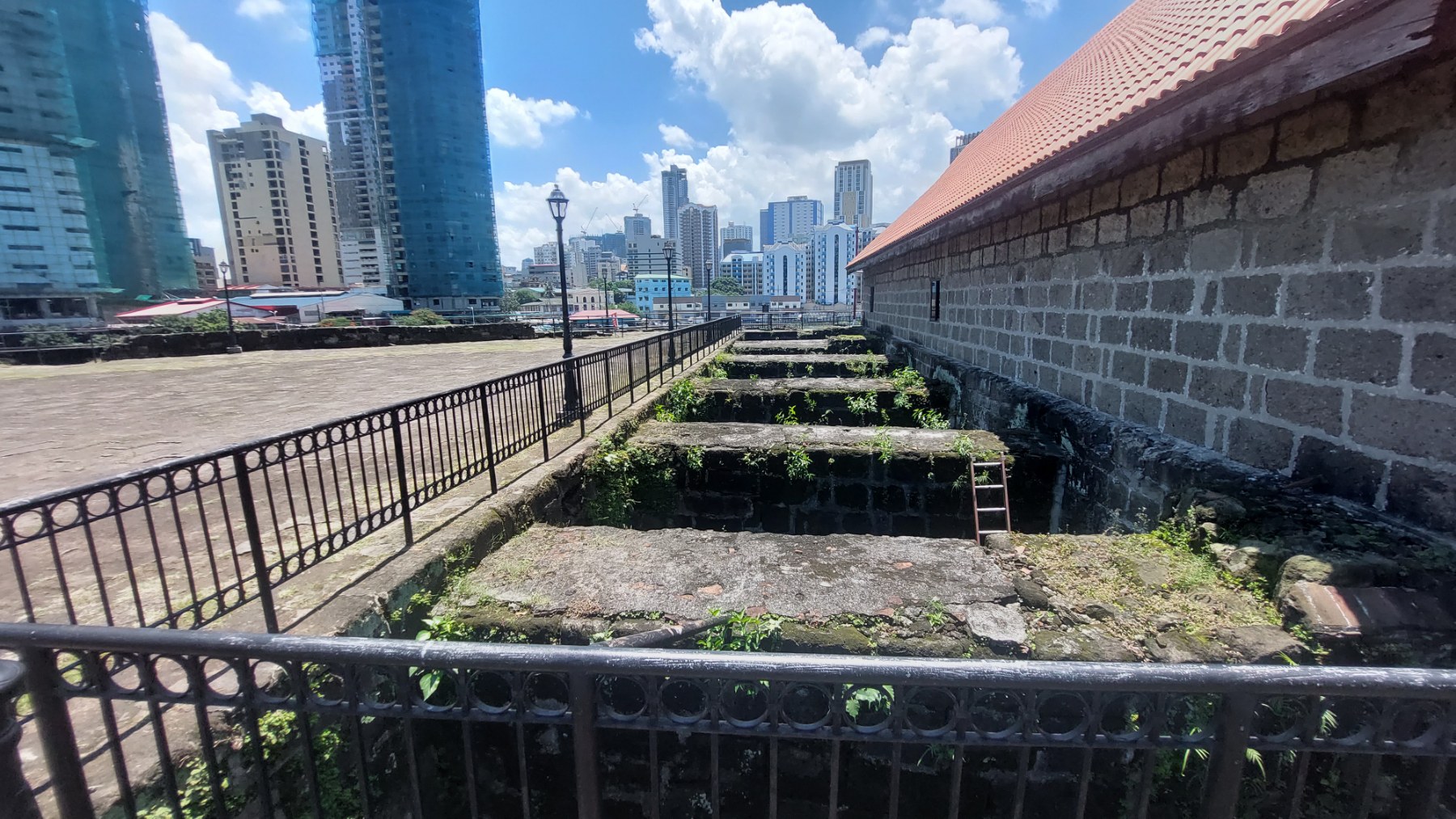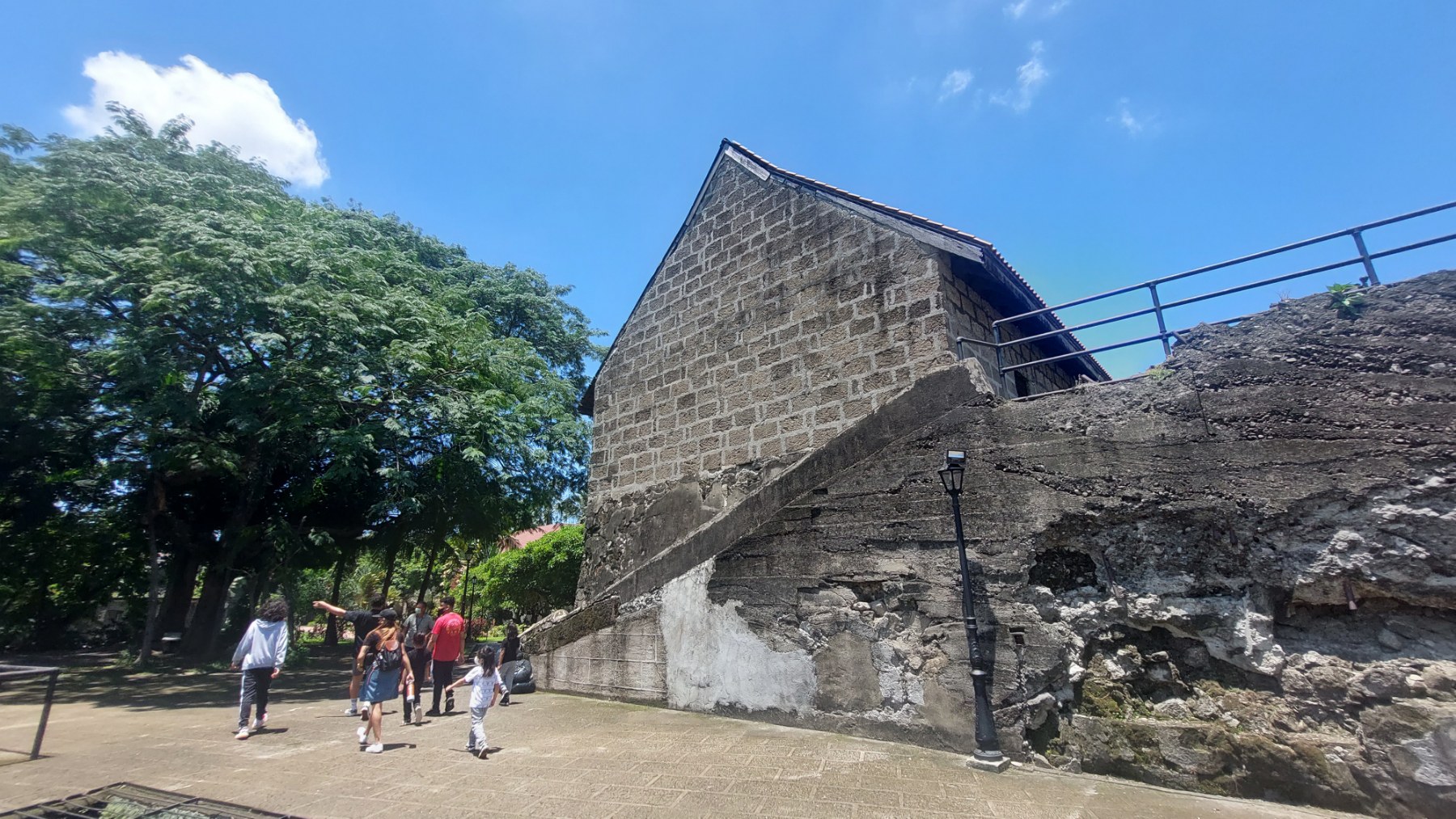Baluarte de Santa Barbara in Fort Santiago was first constructed as a wooden platform at the mouth of the Pasig River in 1593 and rebuilt in volcanic tuff (adobe) with storage vaults and powder magazines in 1599. The Spanish takeover turned the area from a palisaded settlement into a medieval fortress city surrounded by stone walls and a moat.
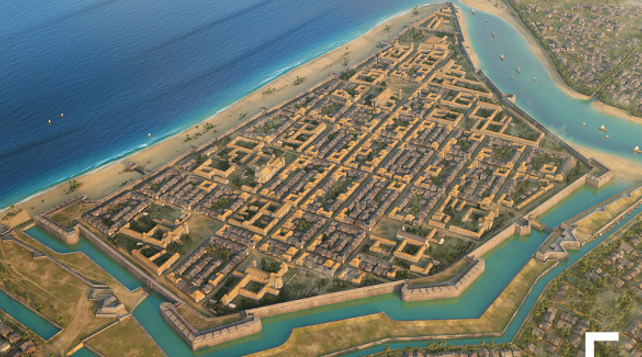
(from: https://artstation.com/artwork/k0XJn)
This baluarte, named after the patron saint of artillerymen, had in 1609 a built quarters of the artillerymen and the house of the commandant (Casa del Castellano). The old storage vaults beneath it were turned into dungeons, with a new storage facility constructed on higher ground, in 1715.
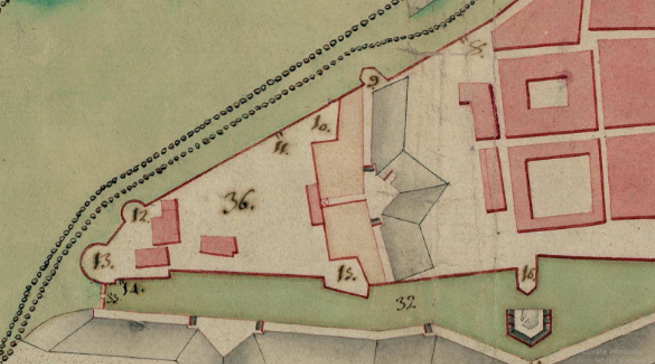
It was further fortified with the construction of a falsabraga on the riverside from 1729 to 1745. In fortifications, a falsabraga or faussebraye is an outer rampart parallel and much lower to the main wall. Owing to its semi-circular shape, the platform was named Media Naranja, which literally translates to half an orange.
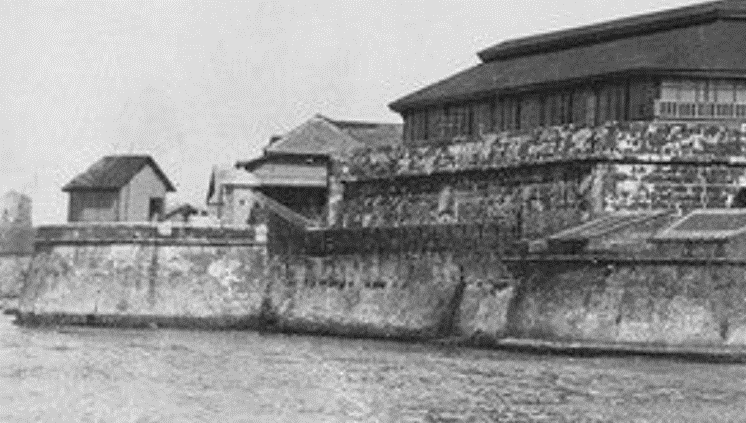
The United States Army built their headquarters here in 1904 and was then occupied by the Japanese army in 1942. Its storage cells and powder storages used as dungeons were used for both civilian and guerilla prisoners during the Second World War. Along with Fort Santiago, it was severely damaged during the Battle of Manila in 1945.

For comments or questions contact us: tourism@intramuros.gov.ph
#WeAreIntramuros





